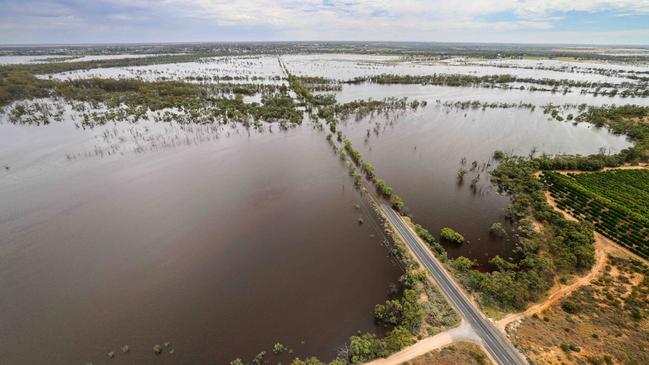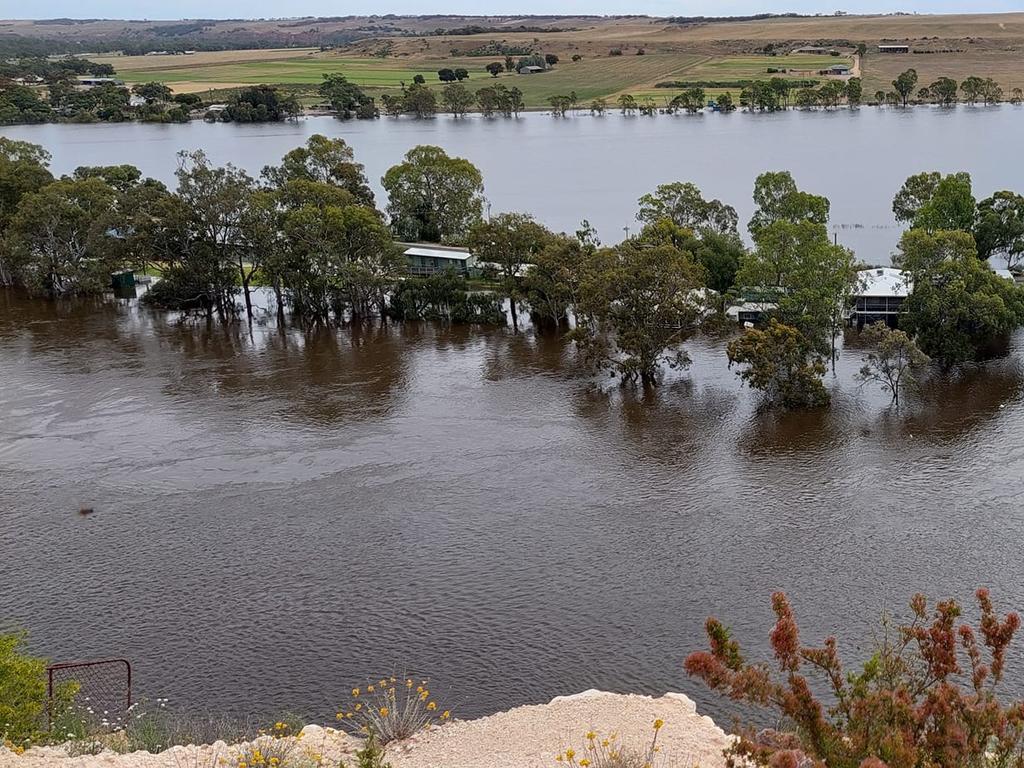Stone fruit growers could lose hundreds of thousands amid SA floods
South Australian stone fruit growers say they could lose hundreds of thousands of dollars if the rising Murray river gets too close to electricity lines.

Stone-fruit growers fear losing hundreds of thousands of dollars if the rising Murray River gets too close to electricity lines, which could force power companies to cut supply to their orchards in the middle of the summer harvest.
Fourth-generation fruit grower Paul Prosser, who grows apricots, some citrus and avocados at his Mypolonga property 90km west of Adelaide, said that at a recent meeting with South Australia Power Networks he was told electricity could be cut off if floodwaters reached within 4.6 metres of power lines.
“If we have the power off for a long period and we can't harvest our crop (and) we could lose up to $100,000 on the crop side,” he said. “With the processing side of it, we would lose another $200,000 through the factory. That’s a pretty big hit.”
The blow for stone-fruit growers is the latest in a weeks-long crisis that has left more than 1100 homes inundated and about 4000 expected to be flooded.
The mass of water has been slowly moving down the Murray after the long-running La Nina dumped huge amounts of water in rivers in NSW, Queensland and Victoria that feed into the Murray-Darling Basin.
Mypolonga is halfway between Murray Bridge and Mannum, and about 200km downstream of Renmark, where authorities believe the Murray has peaked. While the water creeps closer to his property, Mr Prosser’s biggest concern is the power. There is also a large amount of sediment building up in his water filters, which need to be cleaned regularly, creating extra work.
He said he relied on electricity to power about 3000 sprinklers, cutting machines, cold rooms and other equipment in his factory, which processes dried fruit and where jams, chutneys and other products are made.
Mr Prosser said it would take about five generators to run his operation at a cost of about $100,000, an expense he could not justify. There are about eight growers nearby who would also be hit by any power outage, and would likely lose business too because they sell produce to Mr Prosser, who processes their fruit in his factory.
Mr Prosser – who runs Aussie Apricots with wife Kathy – said their crop was watered once a week, and they could last two weeks without electricity with no major losses. “We are farmers and we are used to disruptions,” he said. “At the end of the day it still does worry you. It's your business (and) livelihood.”
South Australia Power Networks was contacted for comment but did not respond.
South Australian SES spokeswoman Sara Pulford said authorities believe the Murray peaked at Renmark on Monday. “Obviously it is going to take some time to make its way down the river. Two to three weeks before that peak gets down to the far end at Wellington,” she told ABC news.
“Nobody can deny we are in a watch-and-wait situation. The planning is in place, everybody has worked really hard to make sure everything we could do to mitigate the effects of these waters has been done.”
Ms Pulford urged residents to be “aware” of their surroundings and monitor SES alerts. She said a few levees around caravan parks had fallen and authorities had not been able to repair them, but largely they remained intact.
Renmark Paringa Council reported “nothing significant” and no major damage to its 38km levee network. “Our Emergency Incident Management Team has also continued to meet over the Christmas break and wanted the community to be rest assured that the levee network is holding strong,” it posted on Facebook.
A community near Mannum, Bolto, about 200km southwest of Renmark, was told it was too late to leave at 4pm on Christmas Day and was isolated by floodwaters.







To join the conversation, please log in. Don't have an account? Register
Join the conversation, you are commenting as Logout